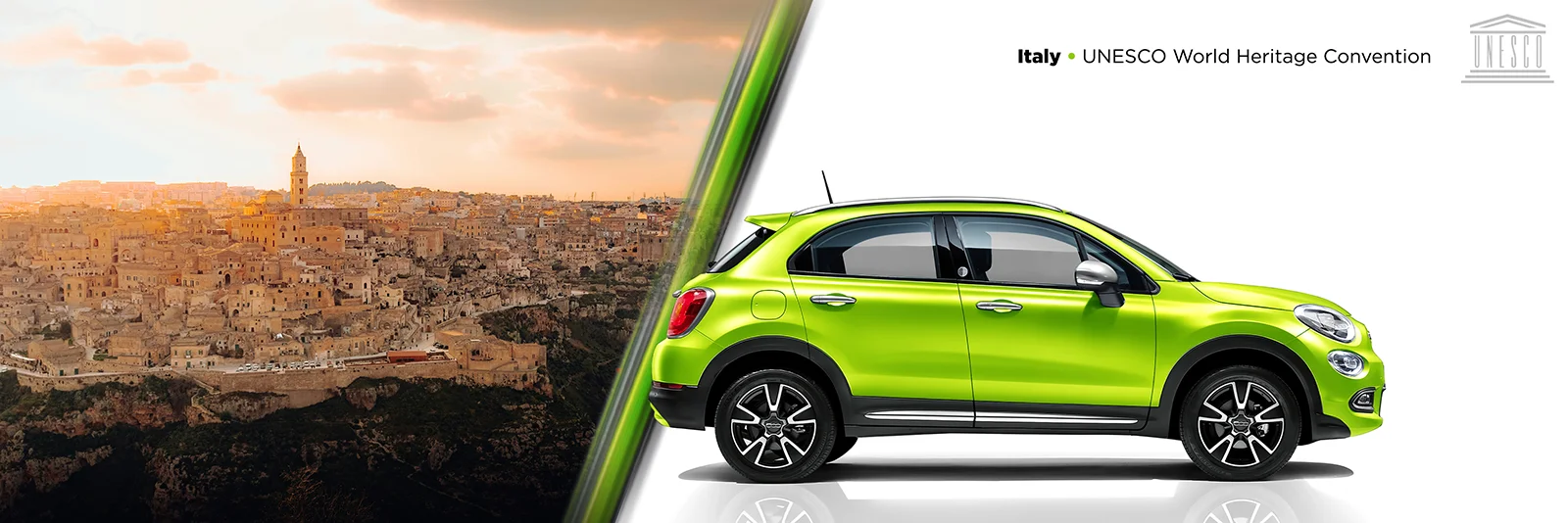IT
EN
ES
FR
IT
EN
ES
FR
With its millennia-old dwellings and the blend of history and landscape, it stands as an extraordinary testament to human ingenuity in shaping the environment. Its inclusion as a world heritage site highlights its historical and cultural significance, inviting the world to preserve and admire this unique example of rock architecture.

The Sassi of Matera are one of the most fascinating historical and cultural sites in Italy, located in the Basilicata region. Recognized as a UNESCO World Heritage Site in 1993, the Sassi of Matera represent an exceptional example of a rock-hewn urban settlement inhabited since the Paleolithic. These ancient districts, consisting of cave dwellings, rock churches, and a labyrinth of alleyways, offer a unique testimony to the human capacity to adapt and coexist with the natural environment, creating an urban landscape of extraordinary beauty and historical significance.
The Sassi of Matera have ancient origins, dating back over 9,000 years. The rock settlements were initially used as natural shelters, but over the millennia, they evolved into a complex residential, religious, and social system. The local populations took advantage of the unique characteristics of the calcarenitic rock, known as "tufo," to carve out homes and communal structures directly into the mountain, creating one of the earliest forms of sustainable urbanization.
Over the centuries, the Sassi developed into two main districts: **Sasso Barisano** and **Sasso Caveoso**. These districts represent a combination of rock architecture and masonry buildings, where the inhabitants adapted their homes to meet climatic and social needs while maintaining a close connection with nature and the surrounding environment. The city became an important cultural and religious center during the Middle Ages, with the construction of numerous rock churches, monasteries, and convents.
Life in the Sassi of Matera was characterized by a strong sense of community and a culture based on sharing and collaboration. The inhabitants lived in cave houses, often divided into multiple rooms, which housed entire families along with their domestic animals. This social organization reflected a symbiosis between humans and nature, where resources were shared, and survival techniques were passed down through generations.
Despite the harsh living conditions, the Sassi of Matera were inhabited until the 20th century. However, in the 1950s, due to the poor sanitary conditions, the Italian government decided to relocate the inhabitants to new homes specifically built outside the Sassi. This relocation marked a period of abandonment for the Sassi, which fell into a state of disrepair until the 1980s, when a process of restoration and enhancement of Matera's cultural and architectural heritage began.
The Sassi of Matera are divided into two main districts, each with unique characteristics and particular charm. Below are descriptions of the two main districts of the Sassi.
Sasso Barisano is the larger and more "constructed" district of the Sassi, characterized by a greater presence of masonry buildings compared to Sasso Caveoso.
Sasso Caveoso is the oldest and most "rocky" district of the Sassi, with architecture that preserves the original appearance of the rock-hewn dwellings.
The Sassi of Matera represent an exceptional example of human settlement that has maintained continuous habitation for millennia, adapting to environmental and social challenges. This extraordinary urban landscape reflects the history, culture, and traditions of the populations that inhabited the region, offering a unique testimony to humanity's ability to live in harmony with nature.
The culture of the Sassi of Matera is deeply linked to religiosity and spirituality, with numerous rock churches and monasteries that testify to the presence of monastic communities and the importance of faith in daily life. The rock churches, with their frescoes and sculptures, represent a valuable artistic heritage that tells the story of Christian spirituality and art in the region.
The Sassi of Matera are also a symbol of redemption and rebirth, with the restoration and enhancement process transforming an abandoned place into one of Italy's top tourist and cultural destinations. Today, Matera is an example of how cultural and architectural heritage can be preserved and enhanced to promote sustainable development and economic growth.
In 1993, the Sassi of Matera were recognized as a UNESCO World Heritage Site, highlighting their universal value as an example of historical human settlement and rock culture. This recognition promotes the conservation and enhancement of this extraordinary urban landscape, ensuring that future generations can continue to study and appreciate its wonders.
The inclusion of the Sassi of Matera on the World Heritage list underscores the importance of this site as an example of human adaptation and architectural ingenuity, offering a unique opportunity to explore the history and culture of one of the oldest cities in the world. Matera continues to be a symbol of beauty, resilience, and innovation, attracting visitors, artists, and scholars from around the world.
Visiting the Sassi of Matera offers a unique opportunity to explore one of the most fascinating and evocative historical sites in Italy. Every alley and cave tells a story, inviting visitors to discover the beauty and culture of this unique city.
The Sassi of Matera are easily accessible thanks to a well-developed transport network:
To make the most of your visit to the Sassi of Matera, here are some useful tips:
The Sassi of Matera are a gem of Italian cultural and historical heritage, offering a fascinating journey through the millennia-old history, rock culture, and timeless beauty of one of the world's oldest cities. From labyrinthine alleys to cave dwellings, the Sassi of Matera offer a unique experience of exploration and discovery that continues to inspire and fascinate visitors from around the world.
Exploring the Sassi of Matera means immersing yourself in a cultural heritage of immense value, discovering the magic and wonder of a city that has left a lasting mark on the history and culture of humanity. A journey to these Sassi is an opportunity to experience the history and culture of Matera in all its splendor, admiring the rock architecture and timeless beauty that continue to inspire generations of explorers and history lovers.